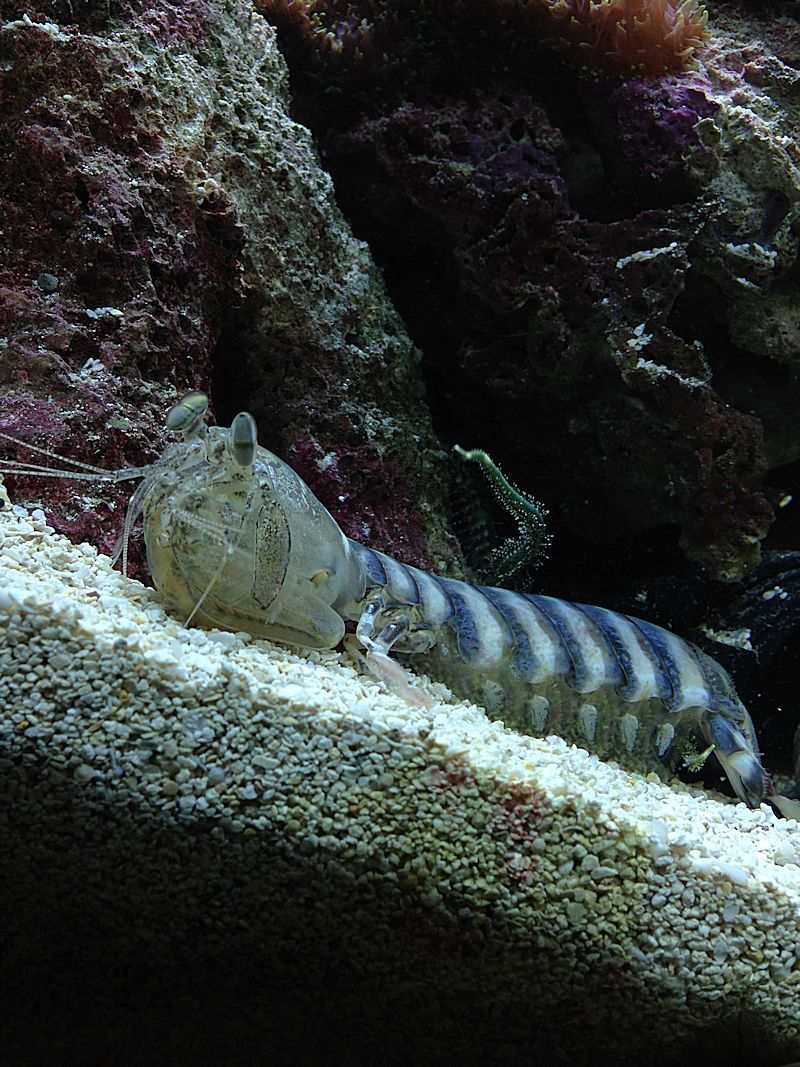FireEater
New member
Oh yea, I should have called him what he is, a Blue Spiny Lobster. Not sure why I keyed on Slipper Lobster.
The "squillid" died yesterday. After I pulled him out, he had holes in his tail section. I suspect his injuries were either from the shrimp net or the shrimp he was housed with.
Once the other Mantis settles in, I'll go back to the bait camp and look through the shrimp holding tanks for more. They are doomed to death anyway.
Well I added a lot of sand in the corner of the tank for him to build his burrow. Hopefully he will get after it tonight.


Not sure if any of you have seen this video. It is funny listening to him narrate it. Watch it all the way to the end though. lol!
http://youtu.be/F5FEj9U-CJM
Also, here is my Peacock I had back in 2008. Both this 29g and the 125g are viewable from both sides. Would a Peacock and the current mantis I have do good in the same tank if they were on opposite sides of the rock work? Or would it be a death battle?


The "squillid" died yesterday. After I pulled him out, he had holes in his tail section. I suspect his injuries were either from the shrimp net or the shrimp he was housed with.
Once the other Mantis settles in, I'll go back to the bait camp and look through the shrimp holding tanks for more. They are doomed to death anyway.
Well I added a lot of sand in the corner of the tank for him to build his burrow. Hopefully he will get after it tonight.


Not sure if any of you have seen this video. It is funny listening to him narrate it. Watch it all the way to the end though. lol!
http://youtu.be/F5FEj9U-CJM
Also, here is my Peacock I had back in 2008. Both this 29g and the 125g are viewable from both sides. Would a Peacock and the current mantis I have do good in the same tank if they were on opposite sides of the rock work? Or would it be a death battle?


Last edited:




